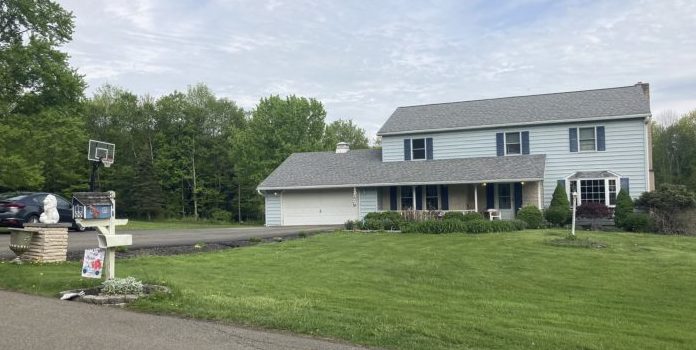(Headline USA) Kyle Tomcak was looking for a home for his in-laws in the suburbs around Denver, something priced close to $450,000.
Tomcak became dispirited as he lost out to investors fronting cash offers of $100,000 over the asking price. Then mortgage rates ballooned, putting his price range out of reach.
“All of a sudden, your buying power is less … even though your payments are the same,” he said.
Tomcak, 39, and a project manager for a commercial painting company from Aurora, Colorado, had hoped to lock in a monthly mortgage payment of $2,350.
His mortgage consultant recommended dropping the maximum price he’d pay for a home, first to $300,000 then to $200,000.
The Federal Reserve has aggressively raised short-term interest rates to fight inflation, which in turn helps push rates higher for credit cards, auto loans and mortgages.
Rising mortgage rates have combined with already high home prices to discourage would-be buyers. Mortgage applications have declined sharply.
Sales of previously occupied homes have fallen for five straight months, during what is generally the busiest time of year in real estate.
The rate on a 30-year mortgage averaged around 5.54% this week, according to mortgage buyer Freddie Mac; a year ago it was close to 2.78%.
The increase in rates is leaving buyers with some unwelcome options: pay hundreds of dollars more for a mortgage, buy a smaller home or choose to live in a less desirable neighborhood, or drop out of the market, at least until rates come down.
All signals point toward the Fed continuing to raise interest rates, promising little relief for potential buyers at least for the rest of the year.
Data provided to The Associated Press by the real estate data company Redfin shows that people can’t afford a home that they were able to afford previously.
“Simply put, people cannot afford the same home as they could have a year ago,” said Daryl Fairweather, an economist with Redfin.
Besides pushing would-be homeowners to reconsider their home search, rising rates are also forcing a growing number of buyers who struck a deal on a house to back out.
About 60,000 home-purchase deals fell through in June, representing nearly 15% of all homes that went under contract last month, according to Redfin. That’s up from 12.7% in May and 11.2% a year ago.
For more than a decade, potential homebuyers were willing to put up with rising home prices because the cost of a mortgage was at historical lows.
The average mortgage rate on a 30-year fixed-rate mortgage mostly stayed below 4.5% for most of the last decade, according to data from the Federal Reserve Bank of St. Louis.
The financial data firm Black Knight estimates that the rise in mortgage rates has increased a typical borrower’s monthly payment by 44% since the beginning of the year. Since the start of the pandemic, the average mortgage payment has doubled to more than $2,100.
Most of the pain is being felt at the bottom of the market: the first-time homebuyer, who often has the least amount of money for a down payment and is trying to make the monthly payment work for their budget.
Sales of homes priced below $250,000 fell by more than 30% in June.
Historically, late spring to early summer is the peak home buying season in the U.S., but there are multiple signs that buyers have become discouraged.
The number of Americans applying for a mortgage is down significantly from a year ago. Weekly mortgage applications tracked by the Mortgage Bankers Association are down roughly 50% from a year earlier.
The decline in mortgage applications could signal a slowdown in future home buying activity since potential home buyers do not apply for a mortgage unless they have settled on a particular home or condo.
Adapted from reporting by the Associated Press

